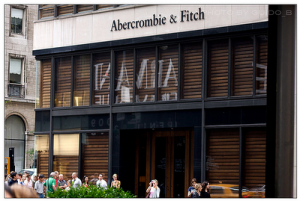 Abercrombie and Fitch has decided it needs to turn up its lights and at the same time, its sales at its apparel chain Hollister.
Abercrombie and Fitch has decided it needs to turn up its lights and at the same time, its sales at its apparel chain Hollister.
The company is eliminating its trademark shutters on its storefronts at some Hollister stores, which are traditionally heavily scented and very dark. Abercrombie is aiming to convey a willingness to listen to its customers and experiment.
That is just one of a number of changes that Mike Jeffries the CEO is touting as the business attempts to stave off its declining sales and to regain its cool amongst the teen and the college-age consumers, of which many have moved over to competitors such as Forever 21 and H&M.
The company is taking less time from the time it designs its clothes until they reach the shelves. Abercrombie will also being selling its products outside its own stores that are online and brick and mortar for just the first time starting sometime later in 2014 through ASOS a retailer online that is based in the United Kingdom.
The test stores for Hollister that took the shutters down have seen noticeably better traffic and sales than the ones that were still shuttered, said company officials.
The company is planning to remodel up to 100 of the 587 stores it has by the end of 2014.
Company stock on Friday was up by 5.8% after the quarterly report was released. While the numbers were negative, they were not as bad as had been expected. Jeffries said that there had been significant improvement in sales of women’s clothing at its stores.
Total sales at same-stores dropped 4%, which was better than the decline of 5.9% that analysts had expected.
Abercrombie and Fitch still posted a $23.7 million loss equal to 32 cents per share, which was wider than the loss last year for the same quarter that was $7.2 million equal to 9 cents per share.
Not including certain charges related to the shutting of the Gilly Hicks stores, the loss was just 17 cents per share for the just ended period.
